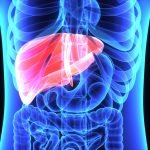All About Autoimmune Thyroiditis
Jillian Stansbury, ND
Autoimmune diseases of the thyroid are on the rise worldwide, believed to be due to nutritional and environmental factors including exposure to heavy metals, organochlorides, pesticides,1 and tobacco smoke.2 Autoimmune thyroid disease, namely Graves’ disease and Hashimoto’s thyroiditis, involve T cell-mediated inflammatory processes and affect approximately 5% of the population; the incidence of elevated anti-thyroid antibodies is slightly higher than this.3 The T cell-driven immune disorders are characterized by lymphocytic infiltration of the parenchymal cells of the thyroid gland. Chronic thyroiditis is associated with an increased risk of papillary cancer of the thyroid.3
What triggers autoimmune disorders is complex and multifactorial; known contributors include genetic susceptibilities, stress, viruses, drugs, and pollutants such as pesticides. Interaction of specific microbes with the thyroid immune responses may involve genetic susceptibility. Rather than becoming tolerant and responding effectively to particular pathogens, in some cases lack of “tolerance” to certain microbes evolves and immune reactions are perpetuated.4 T-helper (Th) cells are recruited and promote the production of interferon-gamma (IFN-γ) and tumor necrosis factor-alpha (TNF-α), which in turn stimulates chemokines, amplifies the feedback loop, and perpetuates autoimmune processes. Th17 and regulatory T cells (Treg) are particularly involved with Hashimoto’s thyroiditis, and their ratio correlates with the quantity of thyroid autoantibodies produced.5 The hepatitis virus (Hep C and Hep E) may predispose to thyroid disease, and patients with Hep C6 and E7 often display elevated anti-thyroperoxidase and/or anti-thyroglobulin autoantibodies in their serum. Hep C is also associated with another autoimmune disorder, mixed cryoglobulinemia. One hypothesis is that as Th1 cells increase and upregulate cytokines and, in turn, induce inflammatory responses in the thyroid, particularly in those genetically predisposed to hypersensitivity reactions.8 Gluten sensitivity may induce not only celiac disease and its elevated immunoglobulins to intestinal villi, but like the hepatitis virus, increase general immune reactivity, T-cell imbalances, and increase the risk of autoimmune thyroiditis.9,10
Even though autoantibodies are the hallmark of autoimmune thyroiditis, some researchers contend that it is the T lymphocytes, natural killer (NK) cells, and cytokines that actually impair, if not destroy, thyroid function. Increases in NK cells, in particular, are associated with thyroiditis.11 Other researchers report that thyroiditis is a polygenic disorder, in which various genetic variants are influenced by environmental factors.
Genetic Factors Contributing to Thyroiditis
Genetic factors are known to contribute to the risk of developing thyroiditis, and only recently are the mechanisms becoming elucidated. The thyroid-stimulating hormone (TSH) receptor, thyroid peroxidase (TPO), and thyroglobulin (Tg) are all specific proteins that can have unusual “immunogenic” properties, meaning that overproduction, excessive glycosylation and metabolic transformation, and polymorphisms in any one of them can lead to loss of tolerance.12
Some people display a genetic variant that promotes the production of TSH proteins that dimerize more readily than normal; this variant is associated with the pathogenesis of Hashimoto’s.13 Over 60% of patients with polyglandular autoimmune disease have both type I diabetes and thyroiditis. TPO elevations and mood disorders are also common occurrences, not only in those with polyglandular autoimmune diseases, but in their relatives as well, indicating possible genetic susceptibilities to autoimmune disorders.14
Thyroiditis has many possible presentations, including both goiter and atrophy of the thyroid, euthyroid or hypothyroid, and both temporary or permanent.15
Postpartum Thyroiditis
Postpartum thyroiditis begins within the first year following delivery or an abortion – usually very soon after the delivery – and can be transient or long-lasting. Postpartum thyroid disorders occur in 5-10% of all deliveries16 and often consists of 2 phases. A relatively short period of thyrotoxicosis is usually followed by a long-lasting or permanent state of hypothyroidism. In many cases, hormones seem to be fluctuating, based on associated symptoms of hot flashes, depression, anxiety, blood pressure and pulse fluctuations, sleep disorders, and PMS-like symptoms. Although some of these symptoms can occur in euthyroid women postpartum, the greater the number and severity of the symptoms, the more likely thyroid disease is involved.17 Which 5-10% of women this disorder is likely to afflict is unknown, so it would do no harm to offer adrenal support postpartum, as well as selenium throughout pregnancy and the postpartum period.
One study suggested that parity or even having undergone an abortion is a risk factor for developing autoimmune thyroid disease later in life, and that the risk increases with greater numbers of pregnancies or abortions.18
Hepatitis C and Thyroiditis
The initiation of autoimmune processes in the thyroid gland can involve stimulation by interferon, which triggers the release of cytokines from the thyroid gland, which in turn recruits lymphocytes that bring more interferon and cytokines to the site, amplifying the inflammatory processes.19 This is the proposed mechanism whereby viral infections such as hepatitis C, and the use of exogenous interferon as a medication, may initiate thyroiditis. Interferon therapy is well known to induce autoimmune thyroid disorders that may persist for life.20 The use of interferon to treat hepatitis C infections may promote autoimmunity to thyroid proteins. Preexisting autoimmune or thyroid disorders may thus be a contraindication to interferon therapy.21 The search for novel anti-cytokine/anti-inflammatory pharmaceuticals capable of preventing cytokines from binding to cellular receptors is underway, with the goal of producing new tools to treat auto-inflammatory thyroiditis. Fine-needle aspirates of Hashimoto’s thyroiditis cells are frequently positive for herpes virus (82% in one study), and show a higher viral load than controls.22
High Viral Loads and Thyroiditis
One hypothesis regarding why viral and other infections trigger autoimmune reactivity is based on “auto-mimicry,” the phenomenon whereby T and B lymphocytes with antibody-like effects are generated. Researchers collecting data on specific protein and peptide sequences (proteome mapping) of probiotic microorganisms in the body, such as bifidobacteria and lactobacilli species, have identified specific amino acid sequences that occur in tandem with TPO and Tg. These probiotic amino acid sequences are thought to mimic the autoantibodies by competitively binding TPO and Tg, thereby reducing the ability of autoantibodies to bind at the same molecular locations.23
Exophthalmia and Thyroiditis
Graves’ exophthalmia occurs in 25-50% of patients with Graves’ disease and 2% of patients with chronic thyroiditis.24 Most cases involve a period of hyperthyroidism, followed by a calming of the clinical picture into a euthyroid state, or a progression to hypothyroidism. Aging, thyroid dysfunction, TSH receptor antibodies, smoking, and radioiodine treatment for hyperthyroidism all increase the risk of developing Graves’ exophthalmia. Because there are Tg receptors on the back of the eye, Graves’ exophthalmia frequently involves high titers of Tg receptor autoantibodies. Exophthalmia can also occur outside of Graves’ disease, in a euthyroid state.
Hashimoto’s Thyroiditis – Typical Course
When Hashimoto’s is initiated in childhood, those with euthyroid or subclinical hypothyroidism frequently experience a deterioration of thyroid function over time, whereas those with initial hyperthyroidism may maintain thyroid function as the inflammation resolves.25 In general, the hyperthyroid phase lasts around 1 month.26 A large percentage of patients with an episode of Hashimoto’s thyroiditis remain euthyroid for decades upon resolution, but around 25% or more become hypothyroid over time.27 Hashimoto’s may also present as alternating hyper- and hypothyroidism.28
Some patients with autoimmune thyroiditis can be stable for a decade or more upon experiencing a reactivation, perhaps due to an infection, increased viral load, or other inflammatory challenges, most often presenting as new-onset hypothyroidism.29 All patients undergoing anti-thyroid therapies for Graves’ and other forms of thyroiditis and hyperthyroidism should be periodically evaluated for metabolic and autoimmune status. Progesterone levels have an effect on thyroid hormone and TSH release and regulation30; therefore, another clinical approach to treating Hashimoto’s disease is to optimize hormone cycles wherever possible.
TPO Testing for Thyroid Cases
Antibodies to the TPO enzyme are found in 60-70% of postpartum thyroid dysfunction cases, both hypo- and hyperfunction, and only 4% of euthyroid controls. Testing for TPO antibodies is emerging as a more sensitive test for autoimmune dysfunction of the thyroid than is testing for antibodies to Tg itself, as this test is positive in only 50% of such cases or less.31 Postpartum thyroiditis can present as the autoimmune form, with positive TPO and cytokines and T-cell changes, or present as a non-immune variety without these markers. Elevated TPO in pregnant women may increase the risk – as much as 80% – of autism in the child,32 according to a study conducted in Finland.
Selenium for the Thyroiditis – Recent Research Reviews
The thyroid gland has a high concentration of selenium, as the mineral catalyzes both the synthesis and the metabolism of thyroid hormones. Many enzyme families crucial to immune function are selenium-dependent, including iodothyronine deiodinases, glutathione peroxidases, and thioredoxin reductases.33
Selenium supplementation is reported to decrease thyroid autoantibodies of various types, improve exophthalmia, and improve autoimmune-related infertility in both sexes.34,35 However, findings from a Cochrane review of randomized controlled clinical trials, assessing the effects of selenium supplementation for adults with Hashimoto’s thyroiditis, were inconclusive as to measurable effects on serum markers of autoimmunity.36 Although some researchers do report a reduction in anti-thyroid antibody levels,37 the benefit of selenium supplementation to thyroid patients may not be entirely due to effects on selenium-dependent enzymes or hormones, but rather due to selenium’s anti-inflammatory effects. Selenium may support resolution of thyroiditis and reduce autoantibody production.38 Selenium supplementation during pregnancy is also reported to significantly decrease the occurrence of postpartum thyroiditis.37
Botanical Therapies for Thyroiditis
Among the most studied herbs for Hashimoto’s and Graves’ disease are Fucus vesiculosus (a seaweed) and Commiphora mukul (a resinous tree). Fucus is high in minerals, including iodine, with high bioavailability.39 There has been a longstanding belief in the herbal and naturopathic community that Fucus (bladderwrack) may also provide iodine in the form of diiodotyrosine (DIT) – a precursor and molecule close to thyroxine. However, after an exhaustive search, the author was unable to find a single reference or study attesting to this. While Fucus does supply iodine that may benefit hypothyroid patients, an equally important mechanism of action may be the powerful antioxidant properties of the plant. Fucus contains the flavonoid fucoxanthin40 and is reported to have the greatest antioxidant activity of all the edible seaweeds tested.41 Fucus also has the ability to inhibit trans-sialidase activity in the blood, an enzyme associated with cholesterol accumulation.42 This may also benefit patients with low thyroid function because slow metabolism is associated with excessive lipid and glucose accumulation.
Commiphora mukul (guggul) is a traditional Ayurvedic herb, which is now backed by over 30 years of modern research reporting a thyroid-stimulating effect, as well as utility for high cholesterol, obesity, and sluggish metabolic functioning.43 Animal studies have shown Commiphora to reduce the effects of thyroid-suppressive drugs, indicating a thyroid hormone-enhancing effect and thus possible utility for hypothyroidism.44 A ketosteroid found in the oleo-resin of Commiphora is reported to increase the uptake of iodine by the thyroid gland, enhance the activity of TPO enzymes43 and support healthy T3 to T4 ratios.45 Research suggests that the plant’s guggulsterones may inhibit nuclear receptors involved with basic metabolic functions and may contribute to thyroid-supportive effects.46 Hypothyroid patients may display hyperglycemia and hyperlipidemia due to deficient basal metabolic rate. Commiphora’s guggulsterones have hypoglycemic and hypolipidemic effects,47 and animal studies have shown guggulsterones to inhibit maturation of precursor cells into mature adipocytes,47 as well as induce apoptosis of individual fat cells and decrease lipid accumulation.48
The author has published previously on the use of herbs containing rosmarinic acid (Melissa, Lycopus, Lithosperma, Rosemarinus) for treating hyperthyroidism. Rosmarinic acid may form electromagnetic adducts with TSH, thereby binding TSH and affecting its physiologic activity.49 Rosmarinic acid-bound TSH is prevented from stimulating the TSH receptor and adenylate cyclase is not activated, hence thyroxine output is greatly diminished.
Fucus might be considered a foundation herb in formulas for hypothyroidism, while Commiphora might be considered a foundational herb for patients with either hypo- or hyperthyroidism, due to both metabolic supportive effects and an ability to reduce excessive TSH stimulation. All types of hyperthyroidism may benefit from ample doses of antioxidants, in the form of capsulations, herbs, and foods. Patients with severe or urgent issues might be given powerful protocols including pills, teas, tinctures, powders for drinks, and medicinal foods. Because viral load contributes to thyroiditis, patients might be given anti-viral herbs such as Andrographis, Hypericum, Glycyrrhiza, Lomatium, Curcuma, or other specifics to help reduce underlying immune contributors. Anti-inflammatory herbs, foods, and supplements of all types can complement the specific herbs. For example, selenium supplementation is appropriate in all cases. Green tea as a base herb (with the addition of Glycyrrhiza, Melissa, and other herbs as desired) could complement prescribed tinctures and encapsulations. Avoidance of food allergens and a trial elimination of gluten for a period of months is also warranted.
Sample Formula for Hashimoto’s Thyroiditis
| Leonurus cardiaca |
| Commiphora mukul |
| Melissa officinalis |
| Vitex agnus castus |
| Curcuma longa |
(Equal parts, taken 3 or more times daily for many months)
Formula for Postpartum Thyroiditis
| Curcuma longa |
| Glycyrrhiza glabra |
| Urtica dioica (root) |
(Equal parts, taken 3 or more times daily for many months)
Thyroiditis in Association with Hepatitis or Frequent Viral Infections
| Andrographis paniculata |
| Melissa officinalis |
| Curcuma longa |
| Glycyrrhiza glabra |
(Equal parts, taken 3 or more times daily for many months)
Graves’ Thyroiditis
| Commiphora mukul | 2 parts |
| Fucus vesiculosus | 2 parts |
| Glycyrrhiza glabra | 2 parts |
| Panax ginseng | 2 parts |
(Equal parts, taken 3 or more times daily for many months)
Hypothyroidism in Women that Begins at Climacteric or Perimenopause
| Glycyrrhiza glabra | 2 parts |
| Actaea racemosa | 2 parts |
| Commiphora mukul | 2 parts |
| Vitex agnus castus | 2 parts |
(Equal parts, taken 3 or more times daily for many months)
Thyroiditis with Goiter
| Lycopus virginicus | 2 parts |
| Iris versicolor | 2 parts |
| Phytolacca decandra | 2 parts |
| Fucus vesiculosus | 2 parts |
(Dilute with water before ingesting, to reduce potential irritating effects on oral and digestive mucosa)
Autoimmune Disorders are Frequently Polyglandular and/or Polysystemic
- Sjögren’s syndrome
- Rheumatoid arthritis
- Systemic lupus erythematosus
- Systemic sclerosis
- Cryoglobulinemia
- Sarcoidosis
- Psoriatic arthritis
Thyroid Encephalopathy Symptoms50
(This is relatively rare and treated with corticosteroids)
- Epilepsy
- Disturbance of consciousness
- Cognitive impairment
- Memory loss
- Myoclonus
- Hallucinations
- Stroke-like episodes
- Tremor
- Involuntary movements
- Language impairment
- Gait impairment
Hashimoto’s and Polycystic Ovary Syndrome
- Hashimoto’s thyroiditis and PCOS are closely linked51
- Both display altered T-cell function
- Both are associated with low vitamin D levels
- Both are associated with an elevated Estrogen/Progesterone ratio
Thyroiditis or Papillary Cancer?
- There are no definitive clinical signs that differentiate the two52
- There are no definitive radiological features that differentiate the two
- Fine-needle aspiration of thyroid nodules is required to confirm the diagnosis
Radiologic Indicators Suggestive of Malignancy
- Hypoechogenicity
- Hypervascularity
- Calcifications
Vitamin D May Be Low in Autoimmune Disease53
- Rheumatoid arthritis
- Systemic lupus erythematosus
- Systemic sclerosis
- Type 1 diabetes mellitus
- Multiple sclerosis
- Inflammatory bowel diseases
- Autoimmune thyroid diseases (ie, Hashimoto’s thyroiditis and Graves’ disease)
- Autoimmune gastritis
Hashimoto’s and Graves’ Disease Inter-relationship
Hashimoto’s and Graves’ disease share a common genetic predisposition and can occur within the same family.54 Both Graves’ and Hashimoto’s patients display a functional defect in some types of NK cells, contributing to imbalances in cytokine profiles and autoantibody generation. Supplementation with DHEA may improve NK cell function in this population.55
Image Copyright: <a href=’https://www.123rf.com/profile_drmicrobe’>drmicrobe / 123RF Stock Photo</a>
 Jillian Stansbury, ND, has practiced in SW Washington for nearly 20 years, specializing in women’s health, mental health, and chronic disease. She holds undergraduate degrees in medical illustration and medical assisting, and graduated with honors in both programs. Dr Stansbury also chaired the botanical medicine program at NCNM and has taught the core botanical curricula for more than 20 years. In addition, Dr Stansbury writes and serves as a medical editor for numerous professional journals and lay publicans, plus teaches natural products chemistry and herbal medicine around the country. At present, she is working to set up a humanitarian service organization in Peru and studying South American ethnobotany. She is the mother of two adult children, and her hobbies include art, music, gardening, camping, international travel, and the study of quantum and metaphysics.
Jillian Stansbury, ND, has practiced in SW Washington for nearly 20 years, specializing in women’s health, mental health, and chronic disease. She holds undergraduate degrees in medical illustration and medical assisting, and graduated with honors in both programs. Dr Stansbury also chaired the botanical medicine program at NCNM and has taught the core botanical curricula for more than 20 years. In addition, Dr Stansbury writes and serves as a medical editor for numerous professional journals and lay publicans, plus teaches natural products chemistry and herbal medicine around the country. At present, she is working to set up a humanitarian service organization in Peru and studying South American ethnobotany. She is the mother of two adult children, and her hobbies include art, music, gardening, camping, international travel, and the study of quantum and metaphysics.
References:
- Duntas LH. Environmental factors and thyroid autoimmunity. Ann Endocrinol (Paris). 2011;72(2):108-113.
- Saranac L, Zivanovic S, Bjelakovic B, et al. Why is the thyroid so prone to autoimmune disease? Horm Res Paediatr. 2011;75(3):157-165.
- Antonelli A, Ferrari SM, Corrado A, et al. Autoimmune thyroid disorders. Autoimmun Rev. 2014 Oct 25. pii: S1568-9972(14)00237-7.
- Steed AL, Stappenbeck TS. Role of viruses and bacteria-virus interactions in autoimmunity. Curr Opin Immunol. 2014;31:102-107.
- Liu Y, Tang X, Tian J, et al. Th17/Treg cells imbalance and GITRL profile in patients with Hashimoto’s thyroiditis. Int J Mol Sci. 2014;15(12):21674-21686.
- Blackard JT, Kong L, Huber AK, Tomer Y. Hepatitis C virus infection of a thyroid cell line: implications for pathogenesis of hepatitis C virus and thyroiditis. Thyroid. 2013;23(7):863-70.
- Dumoulin FL, Liese H. Acute hepatitis E virus infection and autoimmune thyroiditis: yet another trigger? BMJ Case Rep. 2012 Apr 23;2012.
- Di Domenicantonio A, Politti U, Marchi S, et al. A review on thyroid autoimmune disorders and HCV chronic infection. [Article in Italian] Clin Ter. 2014;165(5):e376-e381.
- Ventura A, Ronsoni MF, Shiozawa MB, et al. Prevalence and clinical features of celiac disease in patients with autoimmune thyroiditis: cross-sectional study. Sao Paulo Med J. 2014;132(6):364-371.
- Kristensen B, Hegedüs L, Madsen HO, et al. Altered balance between self-reactive Th17 cells and Th10 cells and between full-length FOXP3 and FOXP3 splice variants in Hashimoto’s thyroiditis. Clin Exp Immunol. 2015;180(1):58-69.
- Ciampolillo A, Guastamacchia E, Amati L, et al. Modifications of the immune responsiveness in patients with autoimmune thyroiditis: evidence for a systemic immune alteration. Curr Pharm Des. 2003;9(24):1946-1950.
- McLachlan SM, Rapoport B. Breaking tolerance to thyroid antigens: changing concepts in thyroid autoimmunity. Endocr Rev. 2014;35(1):59-105.
- Liu C, Li L, Ying F, et al. A newly identified TSHβ splice variant is involved in the pathology of Hashimoto’s thyroiditis. Mol Biol Rep. 2012;39(12):10019-10030.
- Hansen MP, Wunderlich SA, Storz SM, et al. The polyglandular autoimmune syndrome–quality of life and family clustering. [Article in German] Dtsch Med Wochenschr. 2014;139(38):1876-1882.
- Cardot-Bauters C, Wémeau JL. Autoimmune thyroiditis. [Article in French] Rev Prat. 2014 Jun;64(6):835-838.
- Argatska AB, Nonchev BI. Postpartum thyroiditis. Folia Med (Plovdiv). 2014;56(3):145-151.
- Groer M, Jevitt C. Symptoms and signs associated with postpartum thyroiditis. J Thyroid Res. 2014;2014:531969.
- Carlé A, Pedersen IB, Knudsen N, et al. Development of autoimmune overt hypothyroidism is highly associated with live births and induced abortions but only in premenopausal women. J Clin Endocrinol Metab. 2014;99(6):2241-2249.
- Rotondi M, Chiovato L. The chemokine system as a therapeutic target in autoimmune thyroid diseases: a focus on the interferon-γ inducible chemokines and their receptor. Curr Pharm Des. 2011;17(29):3202-3216.
- Doi F, Kakizaki S, Takagi H, et al. Long-term outcome of interferon-alpha-induced autoimmune thyroid disorders in chronic hepatitis C. Liver Int. 2005;25(2):242-246.
- Dusheiko G. Side effects of alpha interferon in chronic hepatitis C. Hepatology. 1997;26(3 Suppl 1):112S-121S.
- Caselli E, Zatelli MC, Rizzo R, et al. Virologic and immunologic evidence supporting an association between HHV-6 and Hashimoto’s thyroiditis. PLoS Pathog. 2012;8(10):e1002951.
- Kiseleva EP, Mikhailopulo KI, Sviridov OV, et al. The role of components of Bifidobacterium and Lactobacillus in pathogenesis and serologic diagnosis of autoimmune thyroid diseases. Benef Microbes. 2011;2(2):139-154.
- Hiromatsu Y, Eguchi H, Tani J, et al. Graves’ ophthalmopathy: epidemiology and natural history. Intern Med. 2014;53(5):353-360.
- De Luca F, Santucci S, Corica D, et al. Hashimoto’s thyroiditis in childhood: presentation modes and evolution over time. Ital J Pediatr. 2013;39:8.
- Nabhan ZM, Kreher NC, Eugster EA. Hashitoxicosis in children: clinical features and natural history. J Pediatr. 2005;146(4):533-536.
- Sato A, Aizawa T, Koizumi Y, et al. Ten-year follow-up study of thyroid function in euthyroid patients with simple goiter or Hashimoto’s thyroiditis. Intern Med. 1995;34(5):371-375.
- Gao Q, Jian LX, Xu JG, et al. Progress of pathogenesis and clinical treatment of Hashimoto’s thyroiditis. [Article in Chinese] Zhongguo Zhong Yao Za Zhi. 2012;37(20):3003-3006.
- Trifănescu R, Poiană C, Hortopan D. Autoimmune thyroid disease–a continuous spectrum. Rom J Intern Med. 2008;46(4):361-365.
- Zagrodzki P, Przybylik-Mazurek E. Selenium and hormone interactions in female patients with Hashimoto disease and healthy subjects. Endocr Res. 2010;35(1):24-34.
- Swelam Eel S, Bakr HG, Mansour MA. Postpartum thyroid dysfunction: a state of immunological dysregulation. Clin Lab. 2011;57(9-10):731-739.
- Brown AS, Surcel HM, Hinkka-Yli-Salomäki S, et al. Maternal thyroid autoantibody and elevated risk of autism in a national birth cohort. Prog Neuropsychopharmacol Biol Psychiatry. 2014 Oct 29;57C:86-92.
- Balázs C, Rácz K. The role of selenium in endocrine system diseases. [Article in Hungarian] Orv Hetil. 2013;154(41):1628-1635.
- Petricca D, Nacamulli D, Mian C, Effects of selenium supplementation on the natural course of autoimmune thyroiditis: a short review. J Endocrinol Invest. 2012;35(4):419-424.
- Winther KH, Watt T, Bjørner JB, et al. The chronic autoimmune thyroiditis quality of life selenium trial (CATALYST): study protocol for a randomized controlled trial. Trials. 2014;15:115.
- van Zuuren EJ, Albusta AY, Fedorowicz Z, et al. Selenium supplementation for Hashimoto’s thyroiditis. Cochrane Database Syst Rev. 2013;6:CD010223.
- Drutel A, Archambeaud F, Caron P. Selenium and the thyroid gland: more good news for clinicians. Clin Endocrinol (Oxf). 2013;78(2):155-164.
- Nacamulli D, Mian C, Petricca D, et al. Influence of physiological dietary selenium supplementation on the natural course of autoimmune thyroiditis. Clin Endocrinol (Oxf). 2010;73(4):535-539.
- Aquaron R, Delange F, Marchal P, et al. Bioavailability of seaweed iodine in human beings. Cell Mol Biol (Noisy-le-Grand). 2002;48(5):563-569.
- Yan X, Chuda Y, Suzuki M, Nagata T. Fucoxanthin as the major antioxidant in Hijikia fusiformis, a common edible seaweed. Biosci Biotechnol Biochem. 1999;63(3):605-607.
- Jimenez-Escrig A, Jimenez-Jimenez I, Pulido R, Saura-Calixto F. Antioxidant activity of fresh and processed edible seaweeds. J Sci Food Agric. 2001;81(5):530-534.
- Aksenov DV, Kaplun VV, Tertov VV, et al. Effect of plant extracts on trans-sialidase activity in human blood plasma. Bull Exp Biol Med. 2007;143(1):46-50.
- Tripathi YB, Malhotra OP, Tripathi SN. Thyroid stimulating action of Z-guggulsterone obtained from Commiphora mukul. Planta Med. 1984;50(1):78-80.
- Panda S, Kar A. Guggulu (Commiphora mukul) potentially ameliorates hypothyroidism in female mice. Phytother Res. 2005;19(1):78-80.
- Panda S, Kar A. Gugulu (Commiphora mukul) induces triiodothyronine production: possible involvement of lipid peroxidation. Life Sci. 1999;65(12):PL137-PL141.
- Nohr LA, Rasmussen LB, Straand J. Resin from the mukul myrrh tree, guggul, can it be used for treating hypercholesterolemia? A randomized, controlled study. Complement Ther Med. 2009;17(1):16-22.
- Sharma B, Salunke R, Srivastava S, et al. Effects of guggulsterone isolated from Commiphora mukul in high fat diet induced diabetic rats. Food Chem Toxicol. 2009;47(10):2631-2639.
- Rayalam S, Yang JY, Della-Fera MA, et al. Anti-obesity effects of xanthohumol plus guggulsterone in 3T3-L1 adipocytes. J Med Food. 2009;12(4):846-853.
- Auf’mkolk M, Amir S, Kubota K, Ingbar S. The active principles of plant extracts with antithyrotropic activity: oxidation products of derivatives of 3,4-dihydroxycinnamic acid. Endocrinology. 1985;116(5):1677-1686.
- Chang JS, Chang TC. Hashimoto’s encephalopathy: report of three cases. J Formos Med Assoc. 2014;113(11):862-866.
- Gaberšček S, Zaletel K, Schwetz V, et al. Mechanisms in endocrinology: thyroid and polycystic ovary syndrome. Eur J Endocrinol. 2015;172(1):R9-R21.
- Anand A, Singh KR, Kushwaha JK, et al. Papillary Thyroid Cancer and Hashimoto’s Thyroiditis: An Association Less Understood. Indian J Surg Oncol. 2014;5(3):199-204.
- D’Aurizio F, Villalta D, Metus P, et al. Is vitamin D a player or not in the pathophysiology of autoimmune thyroid diseases? Autoimmun Rev. 2014 Oct 12. pii: S1568-9972(14)00220-1.
- Bagnasco M, Bossert I, Pesce G. Stress and autoimmune thyroid diseases. Neuroimmunomodulation. 2006;13(5-6):309-317.
- Solerte SB, Precerutti S, Gazzaruso C, et al. Defect of a subpopulation of natural killer immune cells in Graves’ disease and Hashimoto’s thyroiditis: normalizing effect of dehydroepiandrosterone sulfate. Eur J Endocrinol. 2005;152(5):703-712.









